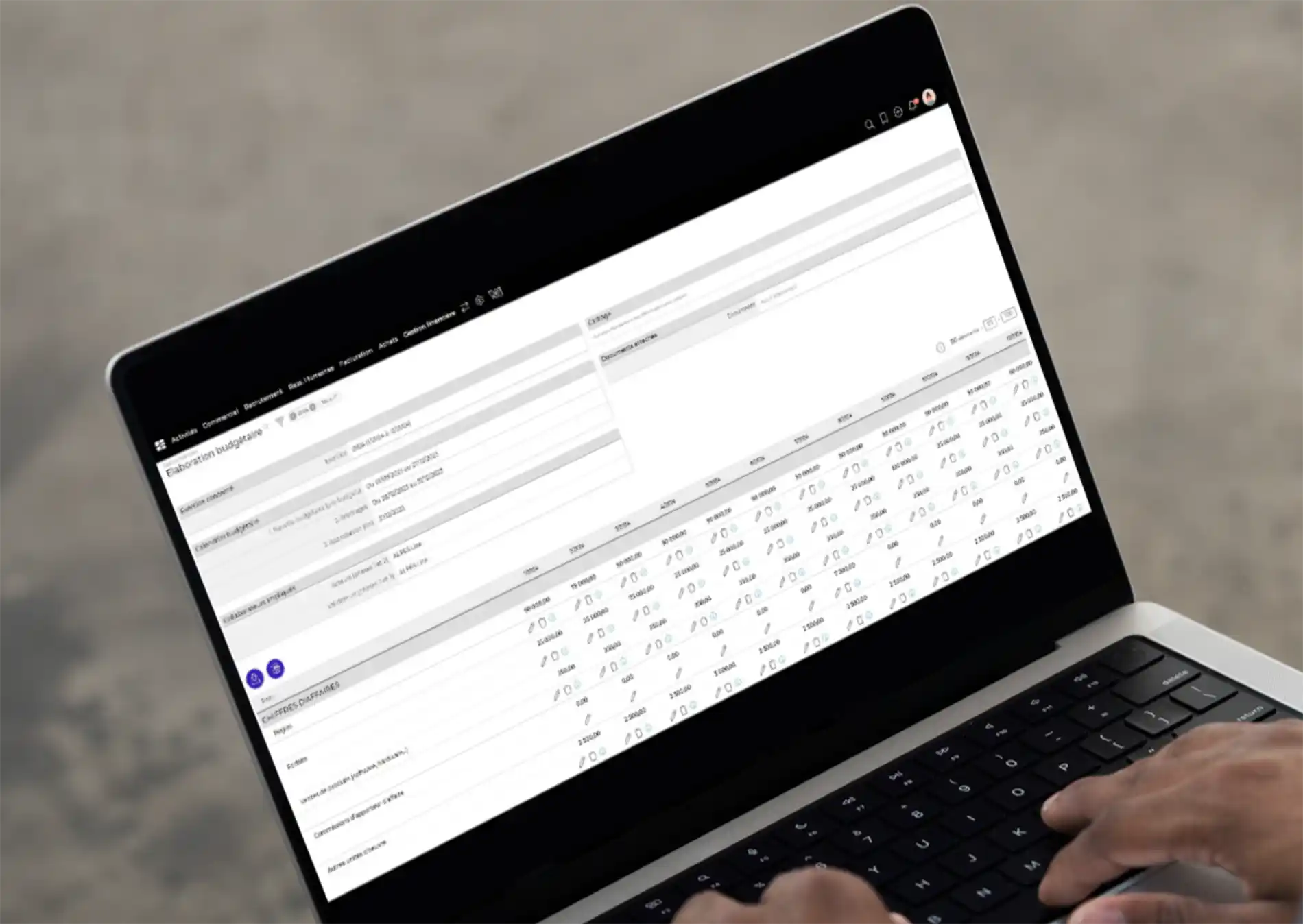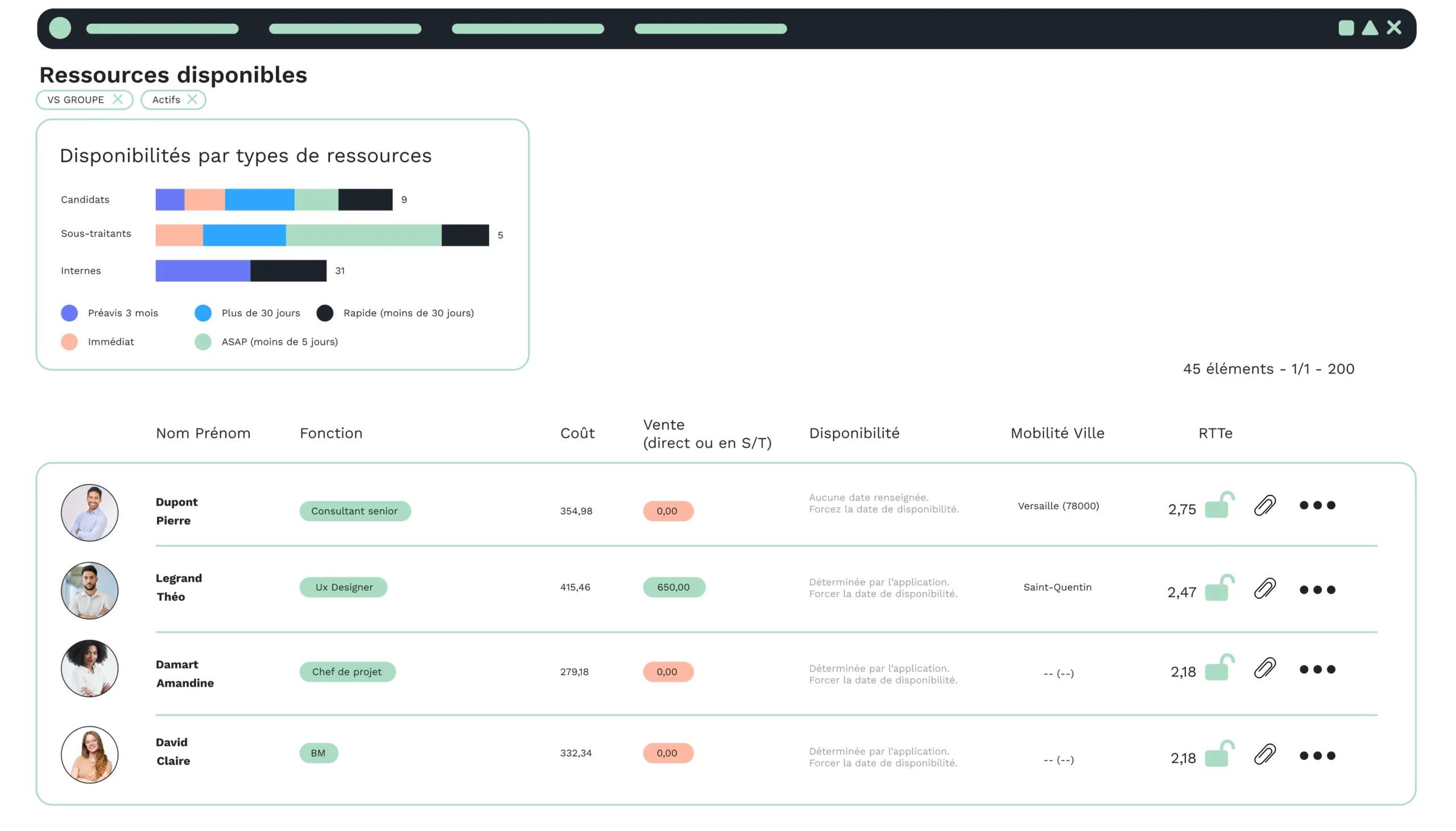You’ve heard of SaaS ERP, but you don’t know the difference between Cloud ERP and On-Premise ERP?
You’ve come to the right place. Let us explain the ins and outs behind the term ERP SaaS.
Key figures
According to a study by Panorama Consulting, 53.1% of companies have opted for Cloud ERP, compared with 46.9% for On-Premise ERP.
Among those who have chosen a Cloud ERP, 76.5% have opted for an ERP in SaaS mode.
Some companies have yet to take the plunge into the cloud, and for good reason:
- Risk of data loss (26.7%),
- The risk of security breaches (26.7%),
- Lack of information about offers (20%).
In this article, we’ll try to answer some of your questions about ERP SaaS, so that you can get a clearer picture.
Let’s start by defining SaaS ERP.
What is ERP SaaS?
What is ERP?
An ERP (Enterprise Resource Planning) is a business management or resource planning software package made up of several modules. These modules can be used to manage various business processes (sales, HR, invoicing, finance, etc.).
ERP is also known as “progiciel de gestion intégré” (PGI).
There are different types of ERP solutions: general-purpose ERP, business ERP, vertical ERP, horizontal ERP, on-Premise ERP, Cloud ERP and SaaS ERP.
In this article, we’ll focus on SaaS ERP.
What is SaaS?
SaaS (Software As A Service) is a subset of Cloud Computing. These two terms are often confused, but we’ll come back to them later.
SaaS, or “software as a service” for its French term, refers to a way of distributing an application. These are ready-to-use, browser-based applications. These applications are designed natively for the web, so there’s no software to install.
ERP SaaS – Definition
Now that we’ve defined the various terms in the expression “ERP SaaS”, it’s easier to understand what an ERP SaaS is.
SaaS ERP is enterprise resource planning software available online. This accessibility is possible because ERP SaaS runs on servers managed by the ERP publisher.
Another key point that distinguishes SaaS ERP from Cloud or On-Premise ERP is the fact that it is priced on a subscription basis.
What’s the difference between SaaS and Cloud Computing?
Previously, we talked about the fact that SaaS and Cloud are two notions that are often confused. We explain the difference.
What is Cloud Computing?
Definition of Cloud Computing
Cloud Computing, commonly known as Cloud, is a business model that encompasses several services such as IaaS, PaaS and SaaS. Its French term is “Informatique en nuage”.
All the services provided by the Cloud are accessible via the Internet, but each plays a different role.
- IaaS (Infrastructure As A Service) represents the infrastructure part of the Cloud, such as servers and storage.
- PaaS (Platform As A Service) stands for software components such as application servers and databases.
- And finally, SaaS represents ready-to-use applications.
The difference between SaaS and Cloud Computing
So SaaS and Cloud are two very different concepts. The Cloud defines the provision of various IT services, including SaaS.
IT services company: Why choose SaaS ERP?
Companies are increasingly turning to SaaS ERP, for a number of reasons:
Rapid deployment
A SaaS ERP system is delivered ready to use, giving companies rapid access to its various functionalities.
Just because implementation is quick doesn’t mean you don’t need to take the time to train ERP software users.
Note also that just because this is a ready-to-use solution, it doesn’t mean that specific developments can’t be made.
More affordable
Choosing SaaS ERP saves you money. The company doesn’t need to invest in new hardware or infrastructure, as the management software is hosted on remote servers. Maintenance is carried out by the service provider.
Automatic updates
The editor manages updates to the ERP application’s functionalities. As a result, the user doesn’t have to do a thing.
The modern interface
The fact that the solution is easy to update means that service providers can offer modern interfaces.
Accessibility from anywhere
Cloud distribution means SaaS ERP can be accessed anytime, from anywhere. The only requirement is Internet access.
Elasticity
One of the great strengths of SaaS ERP is its elasticity. This makes it possible to adapt the service according to needs, whether upwards or downwards, over time or from time to time.
Access to innovative technologies
Implementing new technologies is simpler with SaaS ERP, as it doesn’t require the installation of new hardware as might be the case with On-Premise ERP.
How much does ERP SaaS cost?
So, as we were saying, SaaS ERP saves money, because implementation costs are lower than for on-premise ERP.
Expenses to be taken into account include Internet subscription, ERP tool subscription, number of users, staff training and specific developments if you have any.
To find out more: How can you estimate the cost of your SaaS ERP project?
Which ERP for which type of company: how to choose your SaaS ERP as an IT services company?
Are you convinced now? You want to implement a SaaS ERP within your IT services company. But which one to choose?
To choose the best software for your business, you first need to :
- Define the functionalities you need to manage your business.
- Select the ERP packages that meet your needs.
- Try out the solutions you’ve selected, and then make your choice of management software.
The specifications will help you set out your needs and expectations, and discuss them with the various service providers.
To find out more: IT services company :How do you write the right specifications for an ERP project? + 1 concrete example
Read also







